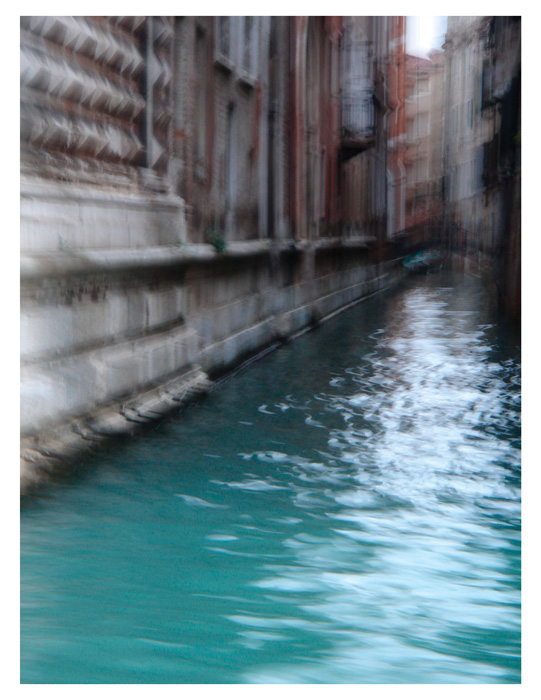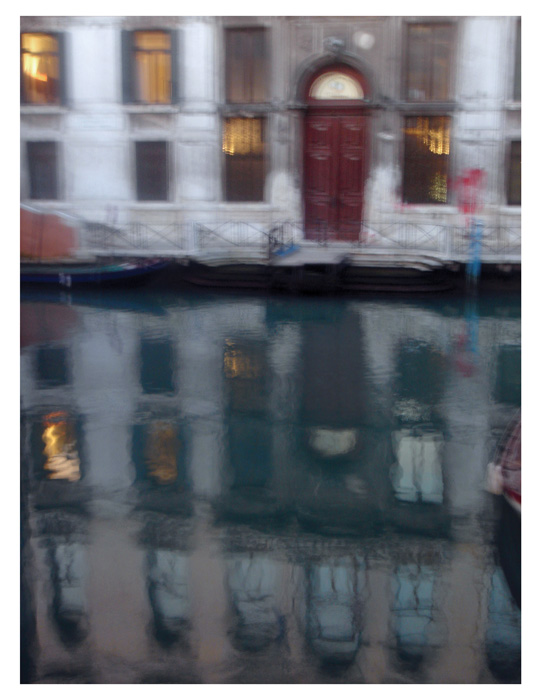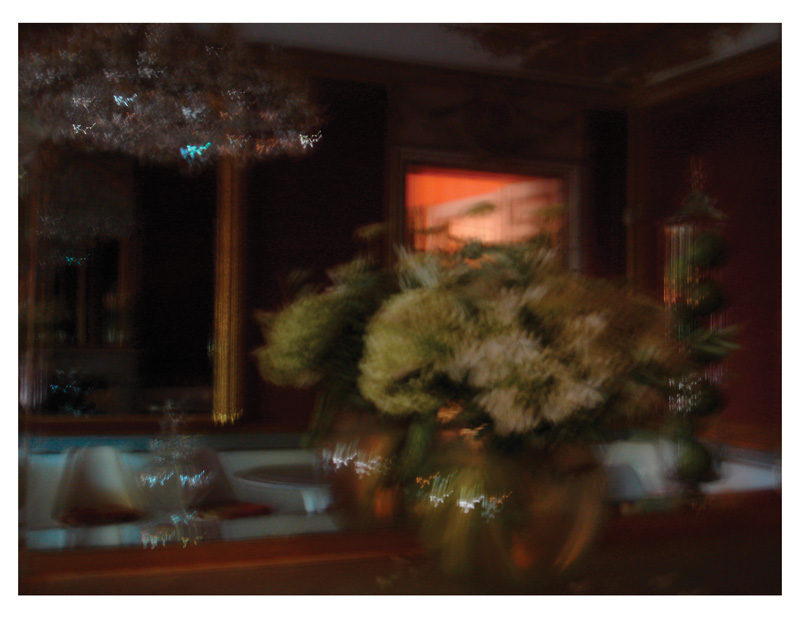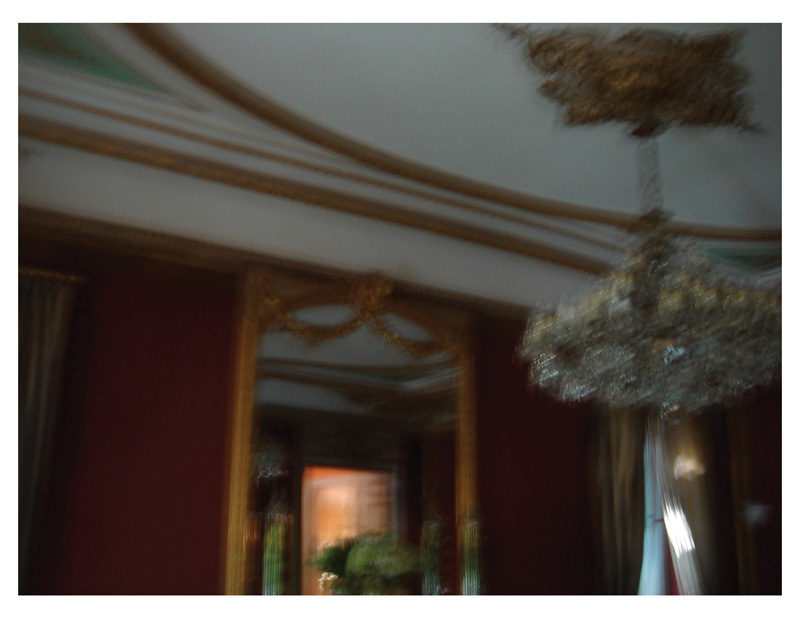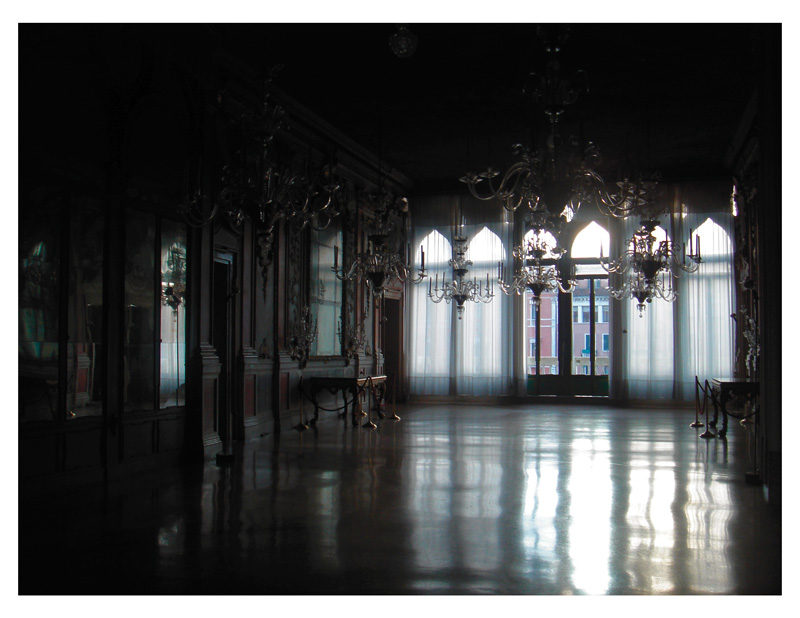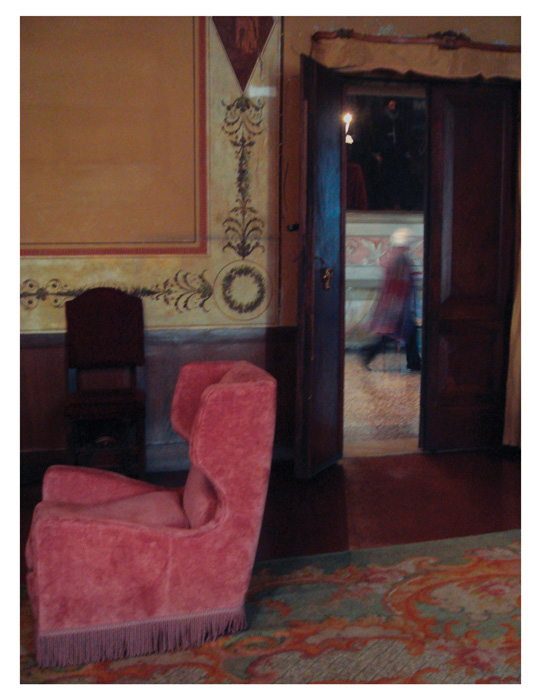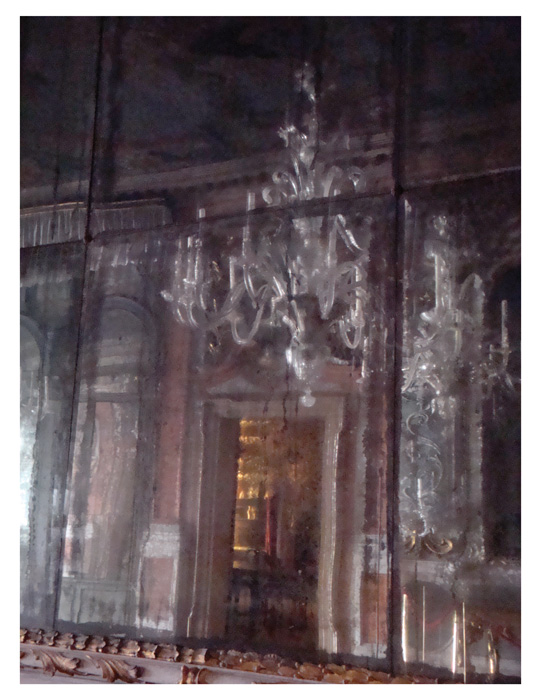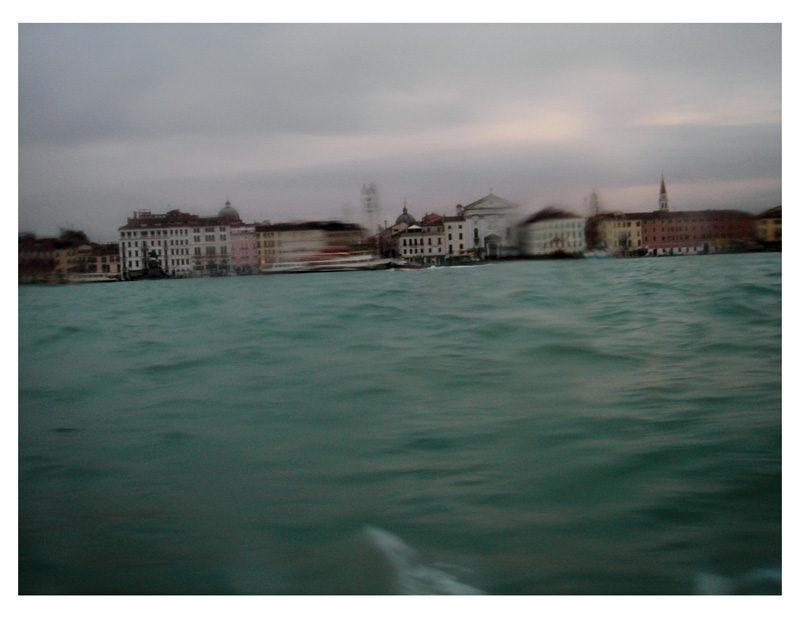by Paule Mackrous
“The issue is clear: truth or life; history or art,” writes Nietzsche in the opening pages of his Seconde considération intempestive1. The living, fragile and fleeting, are lost from the objective spectacle of history. This will remain so as long as we make history a succession of factual data rather than a return to an “internal time consciousness.”2 Words engender linearity, whereas the experience of time is formed of simultaneities and twists. The photographs assembled for Ewa Monika Zebrowski’s series of time, lost suggest that history, through the intermediary of the image, has the power to convey internal time consciousness.
The core: a photograph composed of silhouettes of buildings. It stands out from the others due to its larger format. arrival (2010), a polysemous word that bears within itself both the beginning and the end of an adventure, is the title of this image taken on a ship heading toward Venice. Some photographs in of time, lost may be reminiscent of the emblems of Venice; we think of fragments of palazzos (palazzo barbaro, 2010) or the meanders of canals (passage, 2010), although a misty soft focus blurs any descriptive value. We might think that the architectural detail is charged with a monumental history linked to the site where it is found. Nevertheless, no matter its origin – Venice, Bologna, or Aix-en-Provence, in of time, lost, architectural detail is swallowed up in a shared imagination. Inhabited by the movement of the Venetian waters, this imagination is above all that of the photographer; it thus generates a constant resonance among the images.
“I long for empty rooms,” Zebrowski writes in a poem that accompanies of time, lost. In an adjacent image, sotto, acqua, a heterogeneous space is created by the cohabitation of the deserted hall of an old palazzo and a window offering a view to a modern building. Two temporalities sit side by side, oscillating: that of an interior liquefied by the weight of the past and that of a solid exterior on display in the light of day and in the lightness of the present moment. A punctum, as Roland Barthes would say. Barthes saw in the discordance of space and time in the photograph the potential to overturn the meaning of the image as a whole.3 Zebrowski’s photographs thus actualize unstable memories, to which a meaning can never be completely tied.
Some images give the impression of long cinematographic travelling shots… a voyager also travels… the figure of a photographer passing through the places in which she immerses herself.
If history “imposes death and denies loss,”4 as François Hartog asserts, dread, a recurrent experience in Zebrowski’s photographic work (for example, the exhibition “unravelling, the dress of Jadwiga,” 2009), allows us to think of the time of loss as current and alive. For past, present (2010), the artist went to the home of a friend’s recently deceased parents. Everything seems to be as it was before, as if there has been an attempt to suspend the fragile moment that occurred just before the loss. The inner pain is conveyed by an evocative vagueness, echoing the other images in the series, those of the winter floods of Venetian tides. Here, history is not posed as a dichotomy between two systems of historicity, the past and the present, but is situated in their intertwinings.
Some images give the impression of long cinema-tographic travelling shots (tempo perso, 2009 vicolo, 2010). Of course, a voyager also travels. Armed with a small digital camera, Zebrowski constructs, through images that she displays unretouched, the figure of a photographer passing through the places in which she immerses herself. In palazzo barbaro (2010), she captures the liminal space momentarily formed between monumental buildings and ephemeral atmospheric conditions. The structures thus undergo transitory after-effects, those of their liquefaction. The visual effect oscillates between skeleton and spectre. drawing room, looking glass, and ca’ d’oro (2010) are also inscribed within the metaphor of transition. This time, it is the viewer who is passing through. Perceived via the distorting reflection of antique mirrors, the rooms in a palazzo seem to disintegrate. Like vanities, these images bring us their message: “This is dead and this will die.”5
Zebrowski’s poem ends, “All the books gone / The shelves empty.” Images, filling a void that thousands of books could not fill, takes up the cause. of time, lost opens up narrative worlds, a history in which anach-ronism has been preferred over chronology, multiple fictions over truth – and, for this, images over words.
Translated by Käthe Roth.
1 Friedrich Nietzsche [1874], Seconde considération intempestive: de l’utilité et de l’inconvénient des études historiques pour la vie (Paris: Flammarion, 1988), p. 33 (our translation).
2 Edmund Husserl [1893-1917], Sur la phénoménologie de la conscience intime du temps (Grenoble: G. Million, 2003).
3 Roland Barthes, La chambre claire. Note sur la photographie (Paris: Seuil, 1980), p. 73.
4 François Hartog, Évidence de l’histoire (Paris: Gallimard, 2007), p. 25 (our translation).
5 Barthes, Chambre claire, p. 150 (our translation).
Ewa Monika Zebrowski worked in the film business until 1997, when she began to study photography at Concordia University and UQAM. She is interested in literature and the narrative potential of images and has written a number artist books that are in institutional collections in Canada and the United States. In 2009, she won two Grand Prix Lux awards for best photography book (tenuta di ricordi) and best cultural project (dresses without history). Her most recent solo exhibition, “of time, lost,” took place in 2011 at Galerie Art Mûr, which represents her in Montreal. Zebrowski lives and works in Montreal. http://www.ewazebrowski.com/
A curator and writer on digital arts, Paule Mackrous is the editor-in-chief of the electronic magazine of the Centre international d’art contemporain de Montréal and a contributor to contemporary-art journals and galleries. She is a member of NT2, laboratoire de recherche sur les œuvres hypermédiatiques, and the Experimental Digital Arts Studio in Boulder, Colorado. She is currently writing her dissertation in semiology at UQAM; her subject is the effect of presence as a model of interpretation for emerging artistic and historical forms on the Web.

